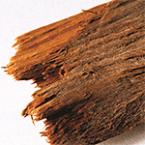Yohimbe

On this page:
Introduction
This fact sheet provides basic information about yohimbe—common names, what the science says, potential side effects and cautions, and resources for more information.
The yohimbe tree is a tall evergreen that is native to western Africa. The bark of the tree contains a chemical called yohimbine. The amount of yohimbine in dietary supplements may vary; some yohimbe products have been found to contain very little yohimbine. A drug form of yohimbine—yohimbine hydrochloride—has been studied for erectile dysfunction.
Yohimbe bark has traditionally been used in Africa as an aphrodisiac (to increase sexual desire). Currently it is used as a folk or traditional remedy for sexual dysfunction, including erectile dysfunction in men.
As a dietary supplement, the dried bark of the yohimbe tree is made into tea and taken by mouth. An extract of the bark is also put into capsules and tablets.
What the Science Says
- It is not known whether yohimbe is effective for any health condition because clinical trials have not been conducted on the bark or its extract.
Side Effects and Cautions
- Yohimbe has been associated with high blood pressure, increased heart rate, headache, anxiety, dizziness, nausea, vomiting, tremors, and sleeplessness. Yohimbe can be dangerous if taken in large doses or for long periods of time.
- People should not combine yohimbe with monoamine oxidase (MAO) inhibitors as effects may be additive. Yohimbe should be used with caution when taken with medicines for high blood pressure, tricyclic antidepressants, or phenothiazines (a group of medicines used mostly for mental health conditions such as schizophrenia).
- People with kidney problems and people with psychiatric conditions should not use yohimbe.
- Women who are pregnant or breastfeeding should not take yohimbe.
- Tell all your health care providers about any complementary health practices you use. Give them a full picture of what you do to manage your health. This will help ensure coordinated and safe care. For tips about talking with your health care providers about complementary and alternative medicine, see NCCAM's Time to Talk campaign.
Sources
- Yohimbe. Natural Medicines Comprehensive Database Web site. Accessed at www.naturaldatabase.com on July 28, 2009.
- Yohimbe bark. In: Blumenthal M, Goldberg A, Brinckman J, eds. Herbal Medicine: Expanded Commission E Monographs. Newton, MA: Lippincott Williams & Wilkins; 2000:429–431.
- Yohimbe bark extract. Natural Standard Database Web site. Accessed at www.naturalstandard.com on July 28, 2009.
For More Information
NCCAM Clearinghouse
The NCCAM Clearinghouse provides information on NCCAM and complementary health approaches, including publications and searches of Federal databases of scientific and medical literature. The Clearinghouse does not provide medical advice, treatment recommendations, or referrals to practitioners.
PubMed®
A service of the National Library of Medicine (NLM), PubMed® contains publication information and (in most cases) brief summaries of articles from scientific and medical journals.
Office of Dietary Supplements (ODS), National Institutes of Health (NIH)
ODS seeks to strengthen knowledge and understanding of dietary supplements by evaluating scientific information, supporting research, sharing research results, and educating the public. Its resources include publications (such as Dietary Supplements: What You Need to Know), fact sheets on a variety of specific supplement ingredients and products (such as vitamin D and multivitamin/mineral supplements), and the PubMed® Dietary Supplement Subset.
NIH National Library of Medicine's MedlinePlus
This publication is not copyrighted and is in the public domain. Duplication is encouraged.
* Note: PDF files require a viewer such as the free Adobe Reader.
